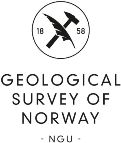

|
Norsk versjon | ||||
| THE ORE DATABASE | |||||
| Deposit Area 2011 - 028 | |||||
| (Last updated 15.feb.2005) | |||||
Name of Deposit Area : Scieccanjohka |
| (Object Id : 2011,028,00,00) |
| Location |
| County : | Finnmark (20) | Municipality : | Kautokeino (2011) |
| Map 1:50000: | Basevuov'di (2032-1) | Map 1:250000: | Inari |
| Marking point: | Longitude: | 25.2271280 | Latitude: | 68.8266710 |
| EU89-UTM Zone 34 |
| X-coord: | 670276 m. | Y-coord: | 7640895 m. |
|
|
| Commodity |
| Main Type: | Precious metals (Au,Ag,PGE) | Sub Type: | Gold | |
| Element(s): | Au |
| Production |
| Activity: | Mining | Reserves: | ||
| Prod. method: | Open pit mining | Production: | ||
| Prod. status: | Disused, closed | Volume of dump: |
| Importance |
| Public: | Little Importance (reg. 18.02.2015) |
| Economical: | Minor interest , (Confirmed 15.feb.2005 by Peter Ihlen) |
Mineralization |
| Era: | Cenozoic | Period: | Quarternary | |
| Dating: | Method: | |||
| Genesis: | Clastic sediment | Form: | Irregular | |
| Main texture: | Pore space filling | Min. distribution: | Irregular (scattered) |
| Main grain size: | Very unevenly grained | Main alteration: |
| Strike/Dip: | Direction: | |||
| Plunge: |
| Stratigraphic classification of host rock |
| Era: | Period: |
| Province: | ||
| Geotec.unit: | ||
| Tectonic complex: | ||
| Igneous complex: |
| Group: | Formation: |
Mineralogy |
| Relationship | Mineral | Amount | |
| Gangue mineral | Quartz | Major mineral (>10%) | |
| Gangue mineral | Feldspar | Major mineral (>10%) | |
| Gangue mineral | Sericite | Accessory mineral (<1%) | |
| Ore mineral | Hematite | Subordinate mineral (1-10%) | |
| Ore mineral | Gold | Accessory mineral (<1%) |
Information(s) in free text format |
| Abstract |
| Shallow workings are found in the old river channel of Scieccanjohka river (Bjørlykke, 1966), which is situated about 5-6 m higher and 200 m west of the present river. The bedrocks in the area consist of strongly fractured and in areas schistose gneissic granites with quartz-rich veins of pegmatite along the foliation. The gneisses is frequently strongly weathered. The bedrocks form small hills and ridges with intervening areas with swamps and small auriferous gravel deposits along the old river channel which has been worked over a distance of about 500 m. The alluvial material richest in gold occur in open clefts in the bedrocks which have been worked several places. |
Bibliography: |
| From NGU's Reference Archive: |
| Bjørlykke, Harald , 1966 |
| De alluviale gullforekomster i indre Finnmark. |
| ;Norges geologiske undersøkelse;TIDSSKRIFTARTIKKEL;NGU; No.236;1-66 pages |
| Abstract: | |
| The first find of alluvial gold in Finnmarken was made by inspector (bergmester) Tellef Dahll in 1866 in sand from a small river named Nitusjokka near Karasjok. During the following 5 years gold deposits were found in all the rivers of the Tana river systm and the Alta and Reisa rivers. Gold has been found in small amount in all kinds of sand- and gravel deposits and also in the unwashed moraine deposits. The gold fields which have been subject to production or prospection work are situated at the upper parts of the rivers. The occurrences of alluvial gold in Finnmark may be classified in The following way: 1. Preglacial accumulations undisturbed by ice erosion during the ice age. 2: Preglacial accumulations disturbed and redeposited in moraines and fluvioglacial deposits. 3. Accumulations in postglacial river beds. The gold in these deposits seems chiefly to have been washed out from the moraines. Mineralogical analyses of the mineral composition of the gold-bearing sand and gravel have been carried out. The minerals of the gold-bearing deposits may be divided in two groups: 1. Minerals belonging to the surrounding solid rock. 2. Minerals which do not seem to belong to the solid rock in the neighbourhood of the deposits. |
| The fact sheet was created on 22.11.2024 |
| Questions or comments regarding the fact sheet can be emailed to: ressursdatabaser@ngu.no |
| Copyright © 2024 Geological Survey of Norway |